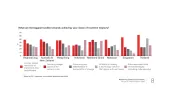
Bye-bye bankruptcy: How to effectively manage cash flow
By Peter MetcalfeWhether you’re a local plumber or multi-national conglomerate, cash flow is the heart of any businesss. Managed poorly, it will stymie business growth, and in the most extreme case lead to bankruptcy.
Whilst uncertainty continues to prevail in the global economy, and the old lines of credit are no longer so readily available, careful management of your cash flow has never been so important.
Why is it some businesses find themselves in a financially precarious position, while others remain relatively untroubled? One explanation is that those businesses, which are in trouble, panic, lose sight of the importance of the integrated management of their operations and become too focused on the short-term instead. They desperately pursue the next sale at all costs, even if it means over-gearing the business.
Managing cash flow is not rocket science, it just requires a disciplined process of integrating day-to-day operations with the strategic business plan, and ensuring at every level of the business operation there is the cash available to operate.
There are five common sense steps to follow: cash for strategy; cash for product; cash for demand; cash for supply; and finally, ‘cashing up’, the reconciled financial picture, allowing the executive a regular check-up on the current health of the organisation’s cash situation.
Understanding cash flow
The first step in effectively managing cash flow is understanding the cash flow pressures and where they come from. The vision, mission, strategy and business objectives for the organisation all require cash and realising how to maintain its steady flow through the company is crucial.
A comprehensive understanding of your business and supply chain allows you to model your business from different perspectives: cost, customer base, location and fundamentally cash. Armed with this insight you can then develop an appropriate strategy.
For example, if your business builds up inventory to deal with seasonal supply, you can look at developing products where demand is counter-cyclical to seasonality, or agree terms with a supplier to manage cash flow during times of inventory build-up. All this is impossible without a clear picture of where and when the cash is likely to be flowing.
Good visibility across your organisation and thus being able to effectively manage cash flow depends enormously on having the right processes in place, particularly when it comes to planning. If your planning and control processes are not robust and reviewed constantly, you run the risk of unnecessarily spending large sums of cash in raw materials, packaging, plant & equipment, labour, storage and distribution – all without any immediate return.
An integrated business
A key issue encountered by many organisations is the inaccuracy of cash flow projections. When the finance department is left to operate as a separate entity, their profit and cash flow projections involve an element of guesswork in relation to the overall plan for the organisation.
To avoid inaccurate plans that don’t reflect reality, the plans of the individual business departments or functions need to be aligned to validate the cash flow forecast.
Financial projections need to be supported by documented assumptions, linked to and driven by detailed activity plans. Input from each area of the business is a necessity to ensure the company plan is authentic and achievable. A modern business planning process that continually monitors and links the detailed execution activities that underpin the financial projections is essential in ensuring the projections can be, and are achieved.
Greater integration allows the different business functions to support one another. For example, outstanding debts shouldn’t be left to the finance department; they should be reviewed in the monthly sales or demand meeting, so the sales team are not only aware who the bad debtors are, they can help do something about it; if they own the relationship with the customer, they should take some of the responsibility for getting the bills paid.
In fact, because of their relationship, they may be more likely to get the client to pay up than credit control.
Can you afford not to?
Under the prevailing economic conditions, the short- and medium-term future of all private and public companies will be heavily influenced by the amount of free cash flow in the business.
Prudent companies will keep abreast of their cash flow on a monthly basis and always reconcile any deviations against the strategic intent i.e. how they originally planned to finance the business to gain competitive advantage.
Most importantly focus will always cover a minimum two-year horizon to instil confidence in owners, shareholders and key stakeholders that the business is heading in the right direction.
Yesterday, money was a commodity – today it is a source of competitive advantage. If your organisation is not engaged in this type of integrated approach, you run the risk of wasting cash; lots of cash – and who can afford that?
Peter Metcalfe, Partner, Oliver Wight Asia Pacific




















 Advertise
Advertise










